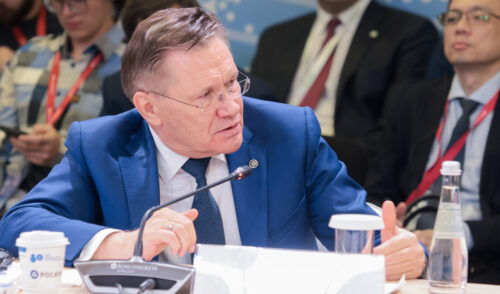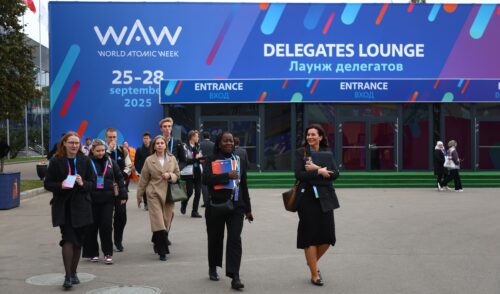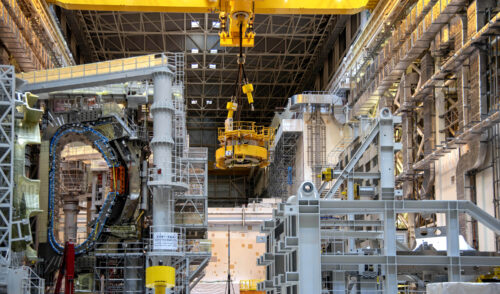
Conquering Europe
back to contentsThe United Kingdom is an island, so in the question of energy provision it can rely only on itself. Not a long time ago the state authorities announced a new wide-scale program for new NPPs construction. According to the World Nuclear Association (WNA) the total capacity of the new stations should amount to 16 HW by 2030. Besides, the government is looking forward not to financing the industry, but to third-side investments.
Rosatom has always said that the company is extremely interested in opportunity of building NPP in Great Britain. Signing several documents with British partners in the beginning of September has become an important step in development of the two states’ nuclear cooperation.
Preparing for cooperation
One of the most important points of the agreement signed by the Rosatom General Director Sergey Kiriyenko and Minister of State for Energy and for Business and Enterprise, Michael Fallon, is that the authorities of Great Britain are ready to give the Russian State Corporation all necessary support in studying nuclear regulation and planning mode, since the work connected with the local regulation system is known to be the most complicated part of entering another country’s market. First it’s necessary to determine the following actions and create relevant structures.
At the second stage, according to the Memorandum, after the first one is approved, the partners can pass to building and operation of the NPP. The partners will be British Rolls-Royce and Finnish Fortum, with whom Rosatom has signed separated agreements.
The parties will work on preparation for the VVER reactor design assessment (Generic Design Assessment) and assessing the opportunities for licensing of an NPP construction site, which are the initial steps in the process of obtaining a construction permit for new nuclear power plants. According to Jukka Laaksonen, the Rusatom Overseas Vice-President (Rosatom’s promotion abroad), the British reactor licensing procedure is based on the idea of total transparence: “All handed to the regulator on our behalf one immediately will be able to see at the web-site of the latter, and this is a new experience for Rosatom.
Cooperation Logic
The Memorandum of Understanding has become a natural continuation of the Russain-British partnership. As early as this June the parties agreed on elaborating a joint group, working in the sphere of application of atomic energy for peaceful purposes as a part of bilateral energy dialogue. The agreement is fixed in the press release issued in London following the results of negotiations between Arkady Dvorkovitch, the Vice PM of the RF and Edward Davey, the Secretary of State for Energy & Climate Change of Great Britain, on June 10.
A little later, in the course of the SPIEF-2013, Sergey Kiriyenko said that the Russian Corporation and its British partners were planning to elaborate a roadmap of Russian participation in the British atomic program in the course of a few months. In July Rusatom Overseas entered Nuclear Industry Association (NIA) of Great Britain, a professional nuclear association uniting more than 260 companies and representing nuclear industry in the country’s Parliament, as well as providing the support of commercial interest for its members, both in Great Britain and in the whole world.
The new station may produce the first electricity as early as in 2024
The new Finnish NPP is to be built in Pyhäjoki, located in Northern Ostrobothnia. The site was chosen in 2011 following the years of studies. Since 2008 Fennovoima has conducted opinion polls in and around Pyhäjoki. According to the results, the support of the project has continuously been stable.
Arranging parameters
Another important event in Rosatom’s international cooperation sphere is the accordance between Rusatom Overseas and Finnish Fennovoima concerning the conditions of the Hanhikivi-1 NPP construction, already sent for approval to Finnish shareholders. Let us remind our readers that, struggling for the contract, Rosatom had won over its two main rivals Areva and Toshiba (Westinghouse majority stakeholder). AES-2006, the reactor Rosatom proposes, will be adapted in accordance with Finnish national safety standards. The final decision of the Fennovoima shareholders is to be made in the beginning of November. Rusatom Overseas says the contract may be signed before the end of the year.
Fennovoima decided not to repeat the negative experience of TVO, such as the Olkiluoto NPP construction with EPR reactor, preferring working with Rosatom, says Sergey Kondratiev, a senior expert of the Foundation Institute for Energy and Finance. He believes the State Corporation to be one of the most reliable players at the world market, speaking about observing initial construction terms and prices. “Rosatom’s desire to become a minority stockholder of the future plant is understandable, – says the expert. – The BOO-schemes in power engineering are getting more widespread, and this can be said not only about the nuclear sphere. On the one hand, this allows a company to obtain constant profit from the plant operation for many years, thus providing financing to other projects, on the other – increases interest in retaining the cost of construction at the initial level”. Now the decision of the Fennovoima’s 60 shareholders is needed. It is supposed to be made by the end of October. The parties are also going to coordinate a detailed scheme of the project, financing patterns and the 34% Rosatom’s share.




